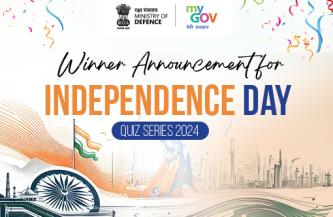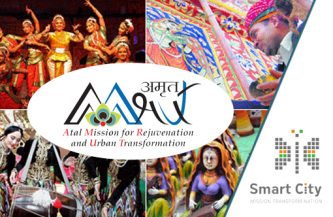A Constitution museum – Bringing the republic to the public

On November 26, 1949, the Constituent Assembly of India adopted the Constitution of India. It came into effect on January 26, 1950, which we celebrate as Republic Day. This year, we are celebrating the 75th anniversary of adopting the Constitution. In 2015, the Government of India declared November 26 — hitherto known as National Law Day — as Constitution Day.
The Constituent Assembly met for the first time in New Delhi on December 9, 1946, and its last session was held on January 24, 1950. Its members had embarked on the herculean task of drafting the Constitution at a time of major social, economic and political upheaval in the country. The provisions of the Constitution reflect a far-sighted vision on the part of the members as they were conscious of the extraordinary task ahead of them. They fully appreciated that the Constitution was not just a legal document outlining various legal rights and freedoms — they also wanted it to usher in a social revolution.
Granville Austin, the author of The Indian Constitution: Cornerstone of a Nation, observed, “The theme of social revolution runs throughout the proceedings and documents of the Assembly. It provided the basis for the decisions to adopt parliamentary government and direct elections, the Fundamental Rights and the Directive Principles of State Policy, and even many aspects of the Executive, Legislative, and Judicial provisions of the Constitution.”
The 75-year journey of the Constitution of India, including its continuous interpretation by the courts and the various amendments by Parliament, makes it among the world’s most dynamic and evolving constitutions. It is indeed the right time to establish the Constitution Museum as an ever-lasting legacy that celebrates the vision and farsightedness of its founders.
Such a museum ought to have five primary objectives. One, building the legacy of the Constitution as an institution. It should not only capture its history but also the evolution of the rights and freedoms enabled by the institutions established by the Constitution. By showcasing these milestones, the museum can inspire future generations to understand and appreciate their rights and responsibilities as citizens. It would also serve as a reminder of the ongoing journey of Indian democracy toward justice and equality for all.
Two, the museum would democratise the understanding of the Constitution and the access to it. The Constitution’s history, evolution, important provisions, and interpretation by the courts and the amendments need to be part of a larger understanding of the people of India. This democratisation of access to the knowledge in and about the document and appreciation of the principles and values that shaped it are critical for promoting responsible and enlightened citizenship. Thomas Jefferson, the principal author of the American Declaration of Independence and the third president of the US, famously observed in 1817, “An enlightened citizenry is indispensable for the proper functioning of a republic. Self-government is not possible unless the citizens are educated sufficiently to enable them to exercise oversight. It is therefore imperative that the nation see to it that a suitable education be provided for all its citizens.”
Three, it should promote civic education in order to empower the citizenry. The history of the Constitution and its making is important as it can serve as an inspiration for institution-building and nation-building. The idea of a Constitution Museum is about creating opportunities for generations of people to participate in the understanding of a constitutional history and the evolution of rights and freedoms. Civic education must be imparted to all individuals across all walks of life so that they may work towards becoming effective participants in Indian democracy. Knowledge and understanding of the Constitution is the first step towards empowering the citizenry. When the rights and freedoms of ordinary individuals are threatened, the Constitution protects those rights and provides remedies for those seeking justice and redressal. It not only recognises rights and freedoms and the normative framework that outlines the values of constitutionalism, but it also provides the methods, mechanisms, procedures and processes for enforcing rights and seeking remedies for access to justice.
Four, the museum should celebrate and pay tribute to the framers of the Constitution and the nation’s unsung heroes. It would provide information about the extraordinary history, accomplishments and vision of the members of the Assembly. It is rather unfortunate that so little is known about the majority of the members of the Constituent Assembly, including the 15 exceptional women — Ammu Swaminathan, Annie Mascarene, Begum Aizaz Rasul, Dakshayani Velayudhan, Durgabai Deshmukh, Hansa Jivraj Mehta, Kamla Chaudhry, Leela Roy, Malati Chaudhary, Poornima Banerjee, Rajkumari Amrit Kaur, Renuka Ray, Sarojini Naidu, Sucheta Kriplani and Vijaya Lakshmi Pandit. Likewise, the contributions of Sir Benegal Narsing Rau, the Constitutional Advisor to the Assembly, in the making of the Constitution are unparallelled and deserve recognition and celebration. In his concluding speech in the Constituent Assembly on November 25, 1949, B R Ambedkar observed, “The credit that is given to me does not really belong to me. It belongs partly to Sir B N Rau, the Constitutional Advisor to the Constituent Assembly, who prepared a rough draft of the Constitution for the consideration of the Drafting Committee.”
Five, a museum would help contribute to wider conversations about the Constitution and Indian democracy. It would lead to the development of a vibrant public discourse that is not only intellectually engaging but also contributes to the strengthening of democratic politics in India. As Orhan Pamuk has observed, “Real museums are places where time is transformed into space.” The Constitution Museum must connect the past and the present with the future. Providing an opportunity for young people to engage and interact with the Constitution and its values would be the best way to protect our rights and freedoms and safeguard the future of the nation.
The 75th anniversary of adopting the Constitution of India offers the opportunity for us to retrace our history, reimagine our journeys, and retell our stories to dream of a better future through the establishment of a Constitution Museum.
The writer is C Rajkumar, founding Vice Chancellor of O P Jindal Global University (JGU) and the Dean of Jindal Global Law School. JGU is establishing India’s first Constitution Museum on its campus in Sonipat, Haryana.

















